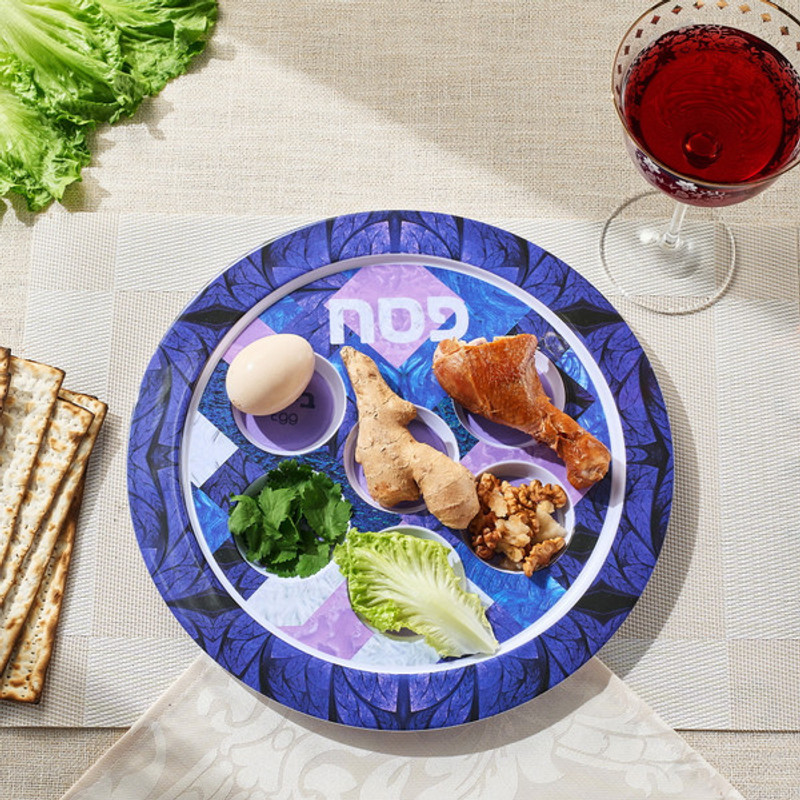The Meaningful Traditions of a Passover Seder
Passover, or Pesach, is one of the most significant holidays in the Jewish calendar, commemorating the Israelites' exodus from Egypt and their journey to freedom. Central to the celebration is the Seder, a ritual meal that recounts the story of the Exodus through symbolic foods, prayers, and traditions. If you’re preparing for a Passover Seder, whether as a host or guest, understanding its key aspects can make the experience even more meaningful.
1. Kadesh (The Blessing of Wine)
The Seder begins with the recitation of Kiddush, a blessing over the first of four cups of wine. This act sanctifies the holiday and sets the stage for the evening’s spiritual journey.
2. Urchatz (Washing of Hands)
A ceremonial washing of the hands follows, symbolizing spiritual purification. Unlike the later hand-washing before eating matzah, this step is performed without a blessing.
3. Karpas (Dipping a Vegetable in Saltwater)
A green vegetable, often parsley, is dipped into saltwater to symbolize both the renewal of spring and the tears shed by the Israelites in slavery.
4. Yachatz (Breaking the Middle Matzah)
The middle of three matzot (unleavened bread) is broken in two. The larger piece, known as the afikoman, is set aside to be eaten later, often hidden for children to find as part of a fun tradition.
5. Maggid (Telling the Story of Exodus)
This is the heart of the Seder, where the story of the Exodus is recounted, primarily through the reading of the Haggadah. The youngest participant traditionally asks the Four Questions, beginning with "Why is this night different from all other nights?"
6. Rachtzah (Second Hand Washing)
A second hand-washing occurs, this time with a blessing, preparing participants to eat the matzah.
7. Motzi Matzah (Blessing and Eating Matzah)
A blessing is recited over the matzah, which is eaten in fulfillment of the biblical commandment to eat unleavened bread during Passover.
8. Maror (Eating Bitter Herbs)
Bitter herbs, usually horseradish, are eaten to symbolize the bitterness of slavery in Egypt.
9. Korech (Hillel Sandwich)
A combination of matzah, maror, and sometimes charoset (a sweet mixture of fruits and nuts) is eaten, following the tradition of the sage Hillel, who combined these elements as a reminder of both suffering and hope.
10. Shulchan Orech (The Festive Meal)
A joyous meal is served, featuring traditional Passover foods such as brisket, matzo ball soup, and kugel. It is a time for family, storytelling, and gratitude.
11. Tzafun (Eating the Afikoman)
The hidden afikoman is found and eaten as the last food of the meal, symbolizing the Passover sacrifice once offered in the Temple in Jerusalem.
12. Barech (Grace After Meals and Third Cup of Wine)
A prayer of gratitude is recited, followed by drinking the third cup of wine. A cup is also poured for the prophet Elijah, whose arrival is eagerly anticipated.
13. Hallel (Songs of Praise)
Psalms and hymns of praise are sung, expressing joy and thanks for redemption.
14. Nirtzah (Conclusion of the Seder)
The Seder ends with a declaration of hope: "Next year in Jerusalem!" Participants express their wish for ultimate redemption and unity.
Bring the Meaning of Passover Home
From the symbolic foods to the storytelling, every part of the Passover Seder is rich with meaning. Whether you are looking for a beautifully designed Seder plate, a unique Elijah’s cup, or a thoughtful host gift, our collection of Passover essentials can help enhance your celebration. Explore our selection today and bring the spirit of Passover into your home!

